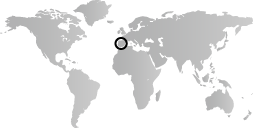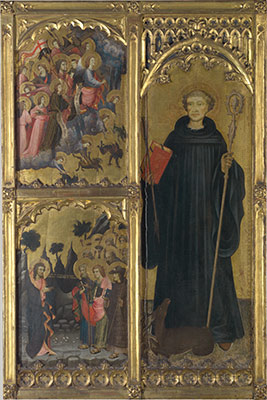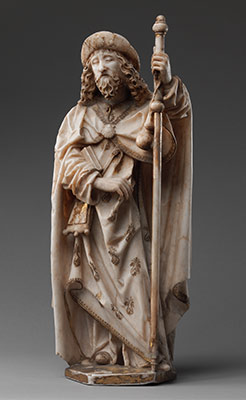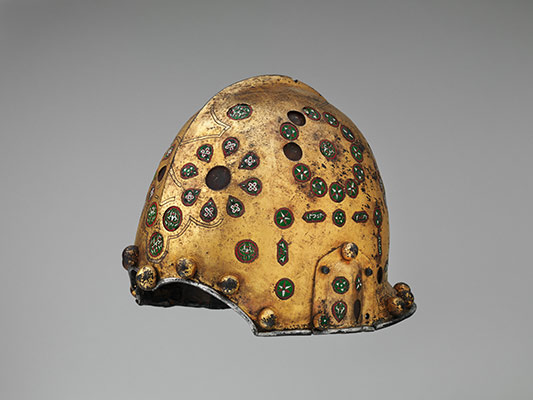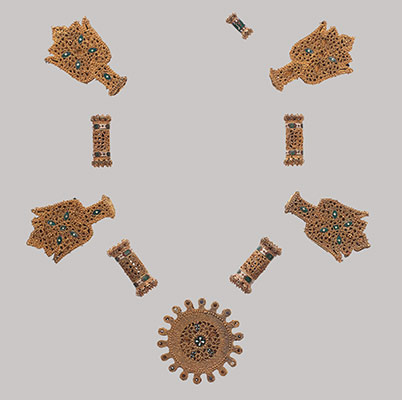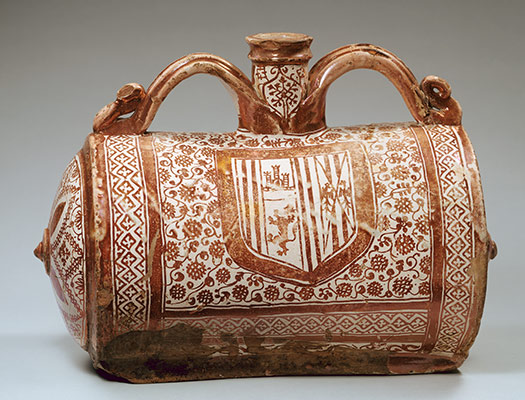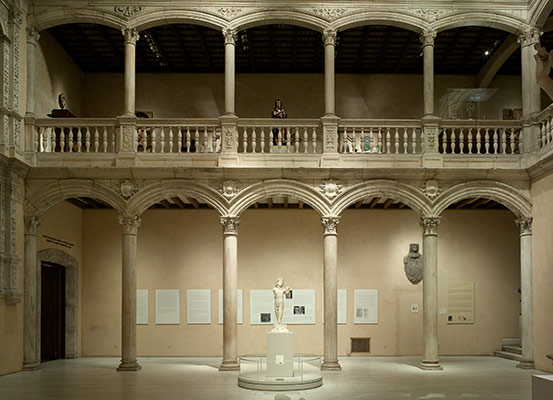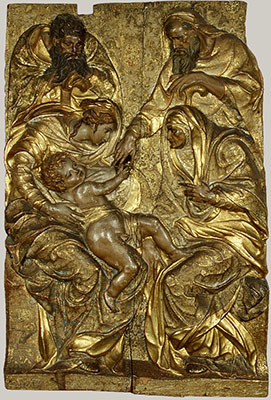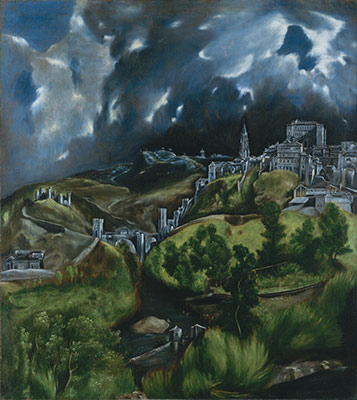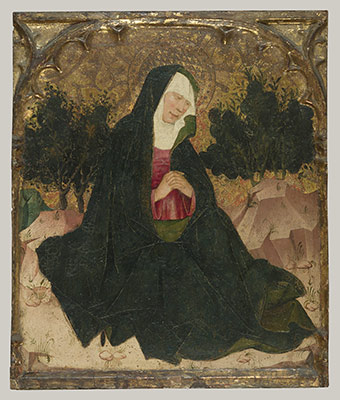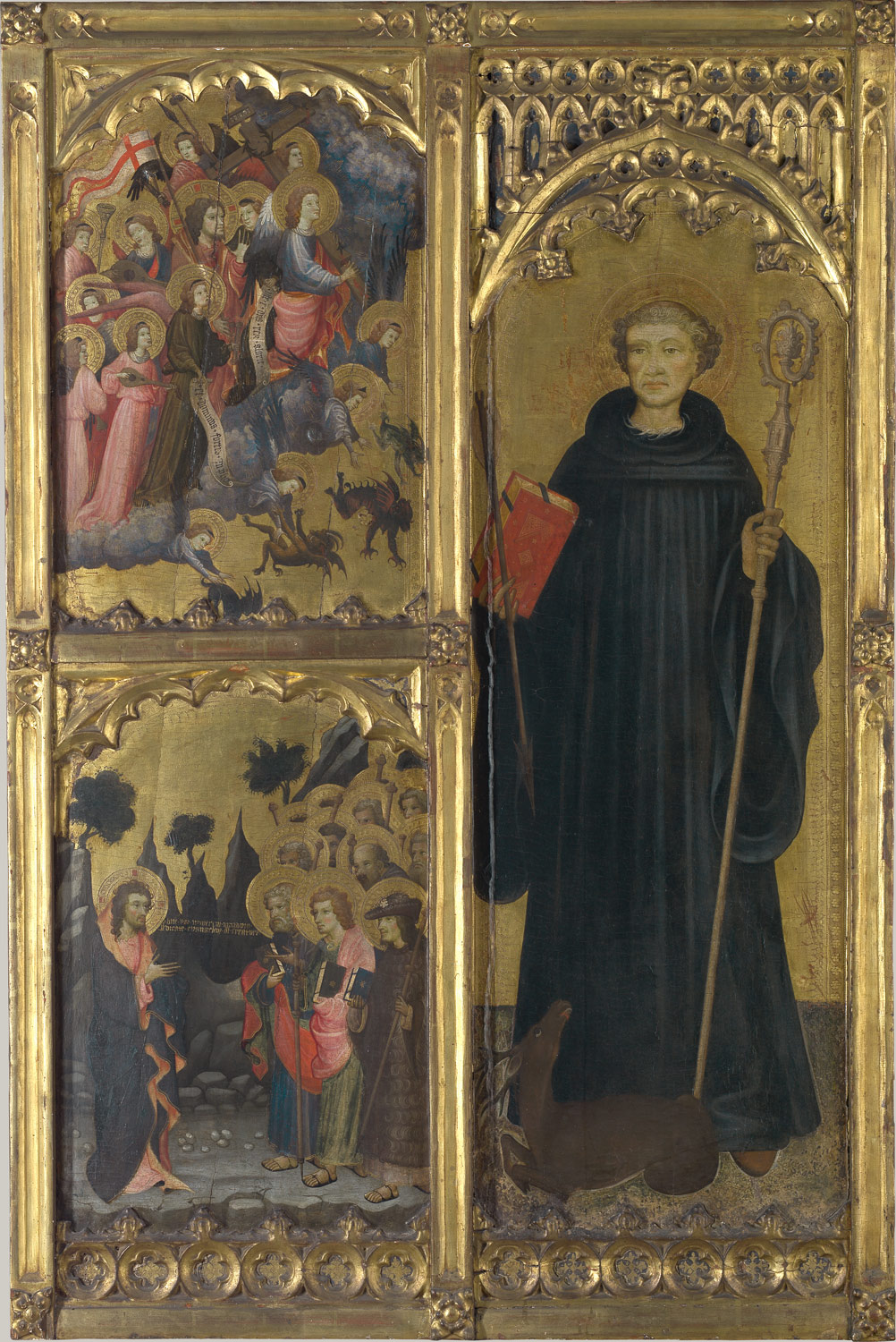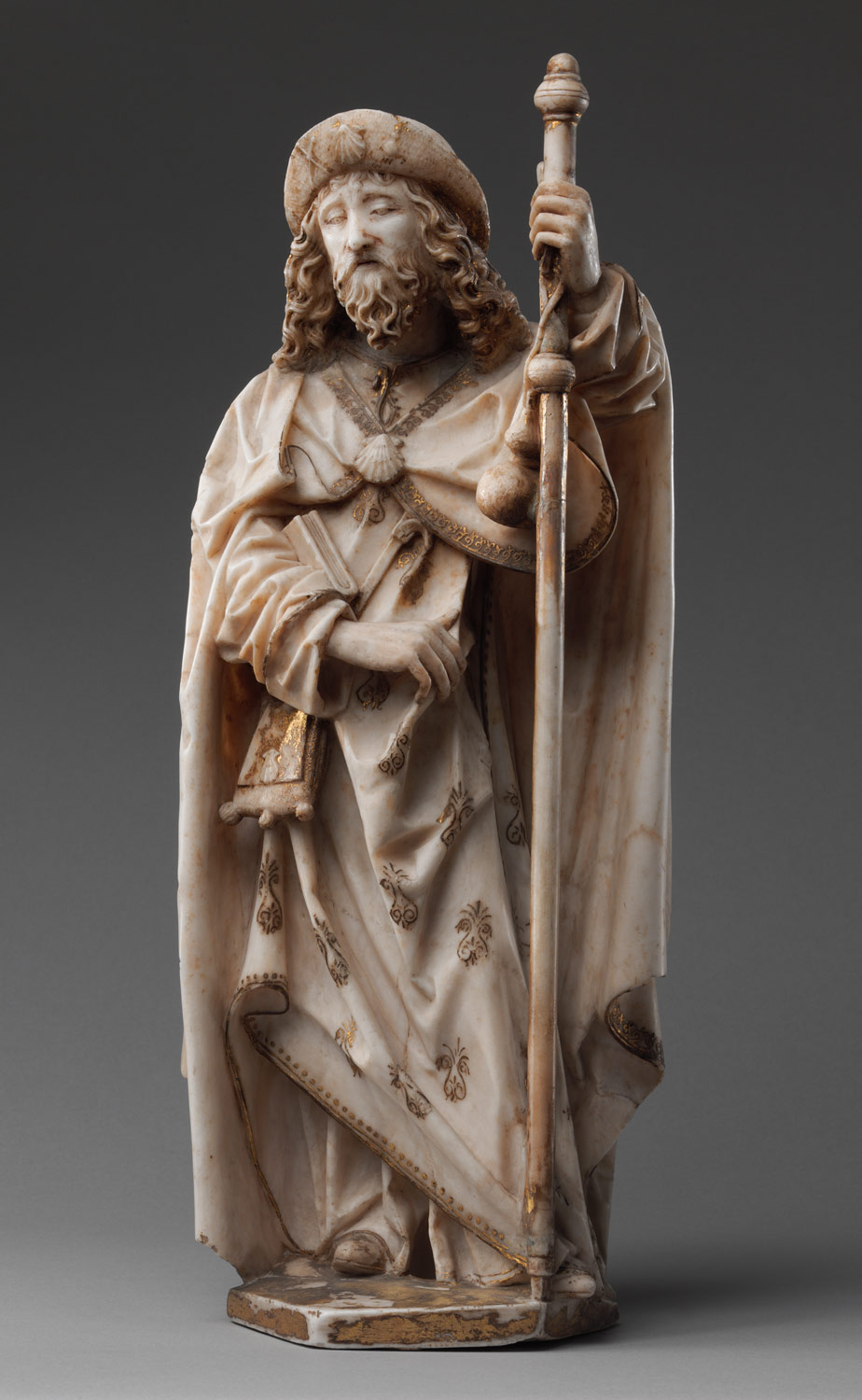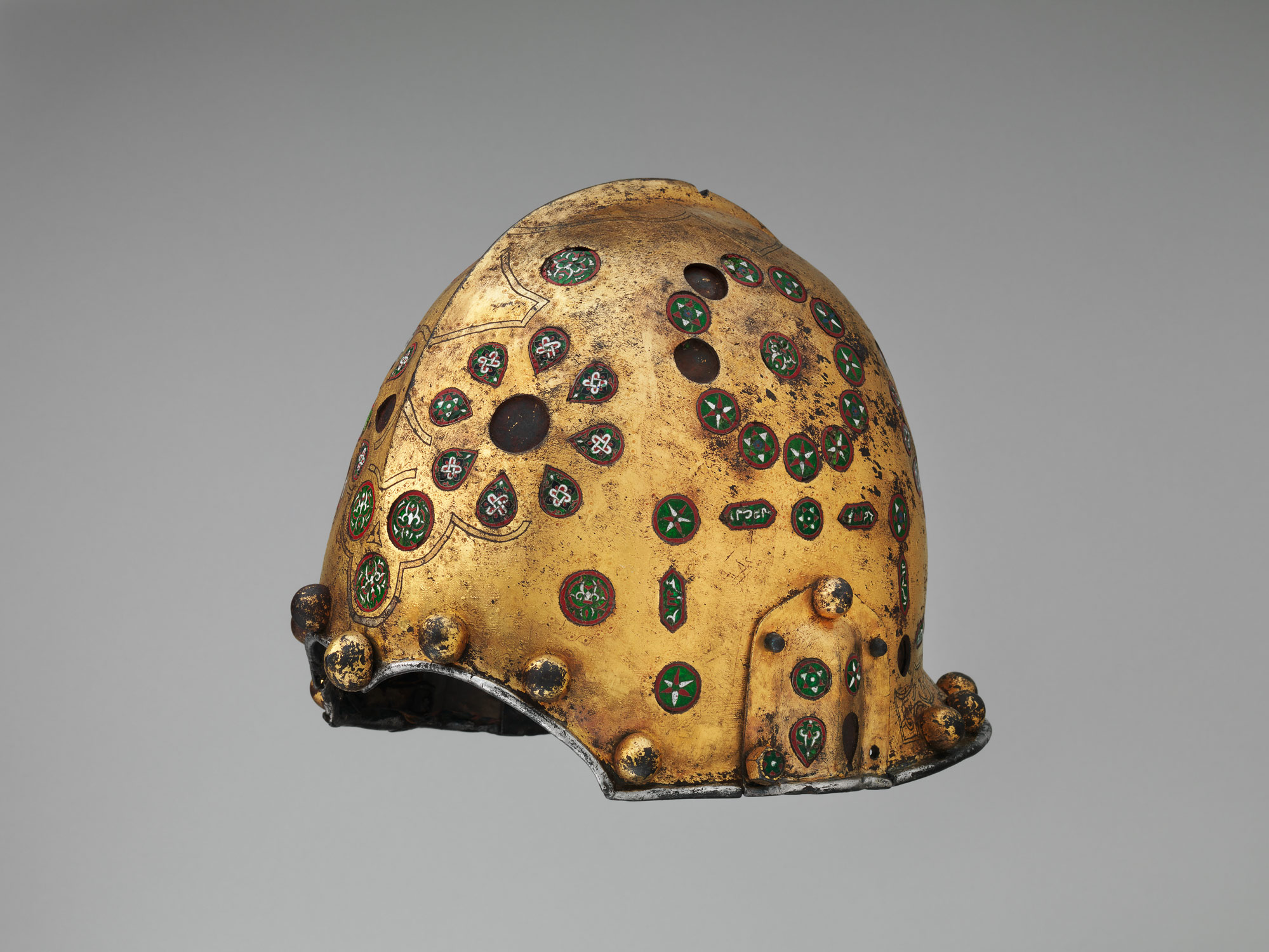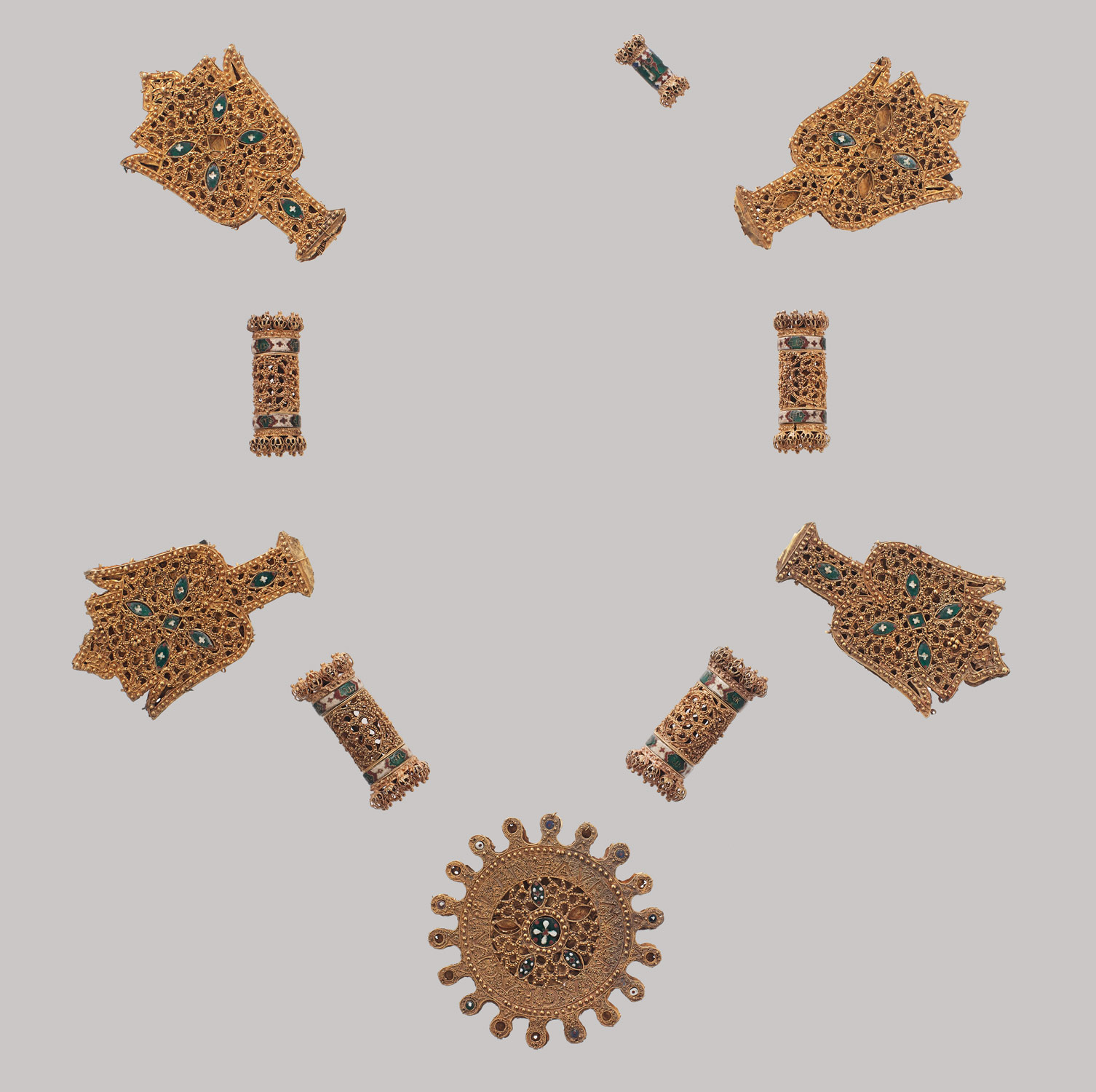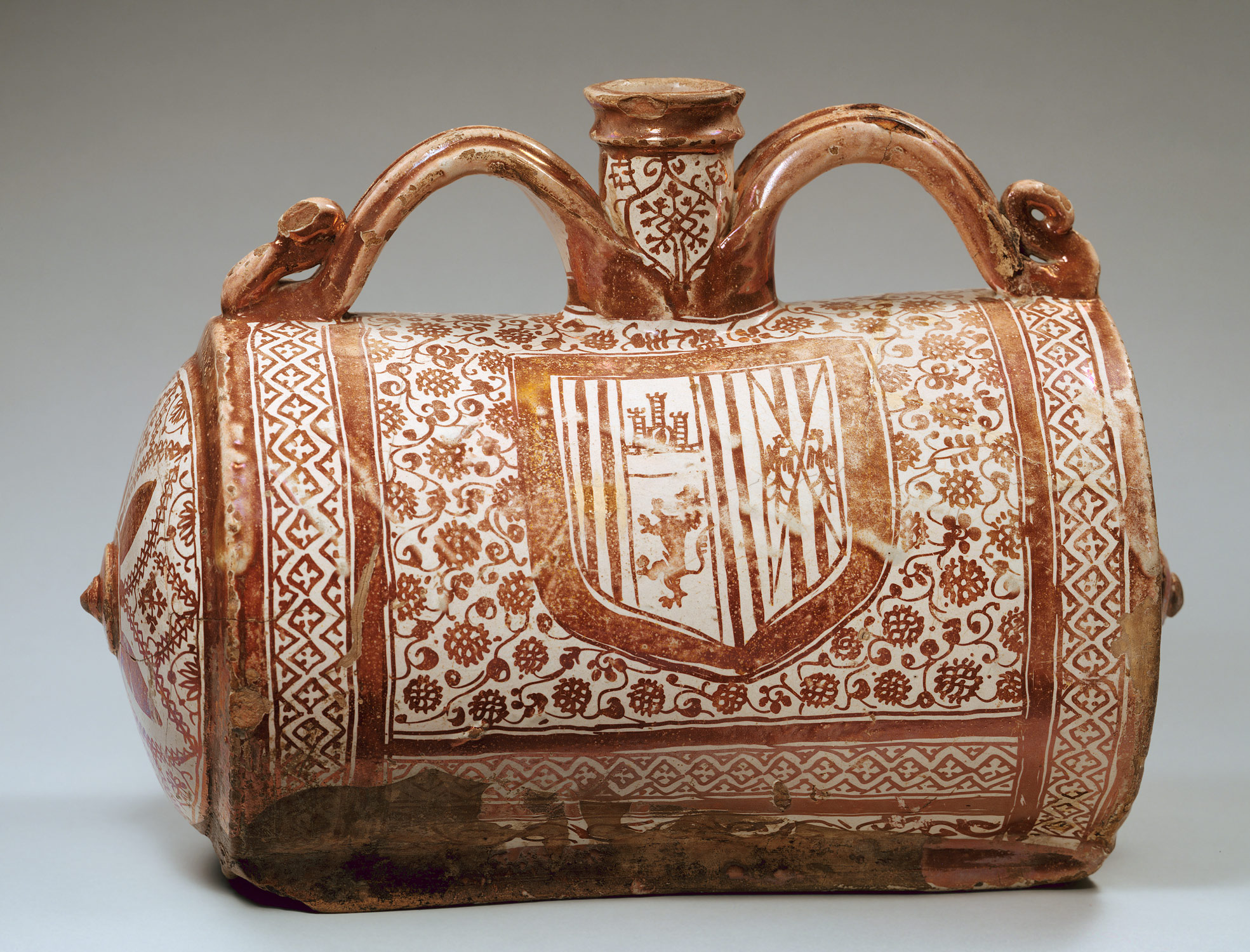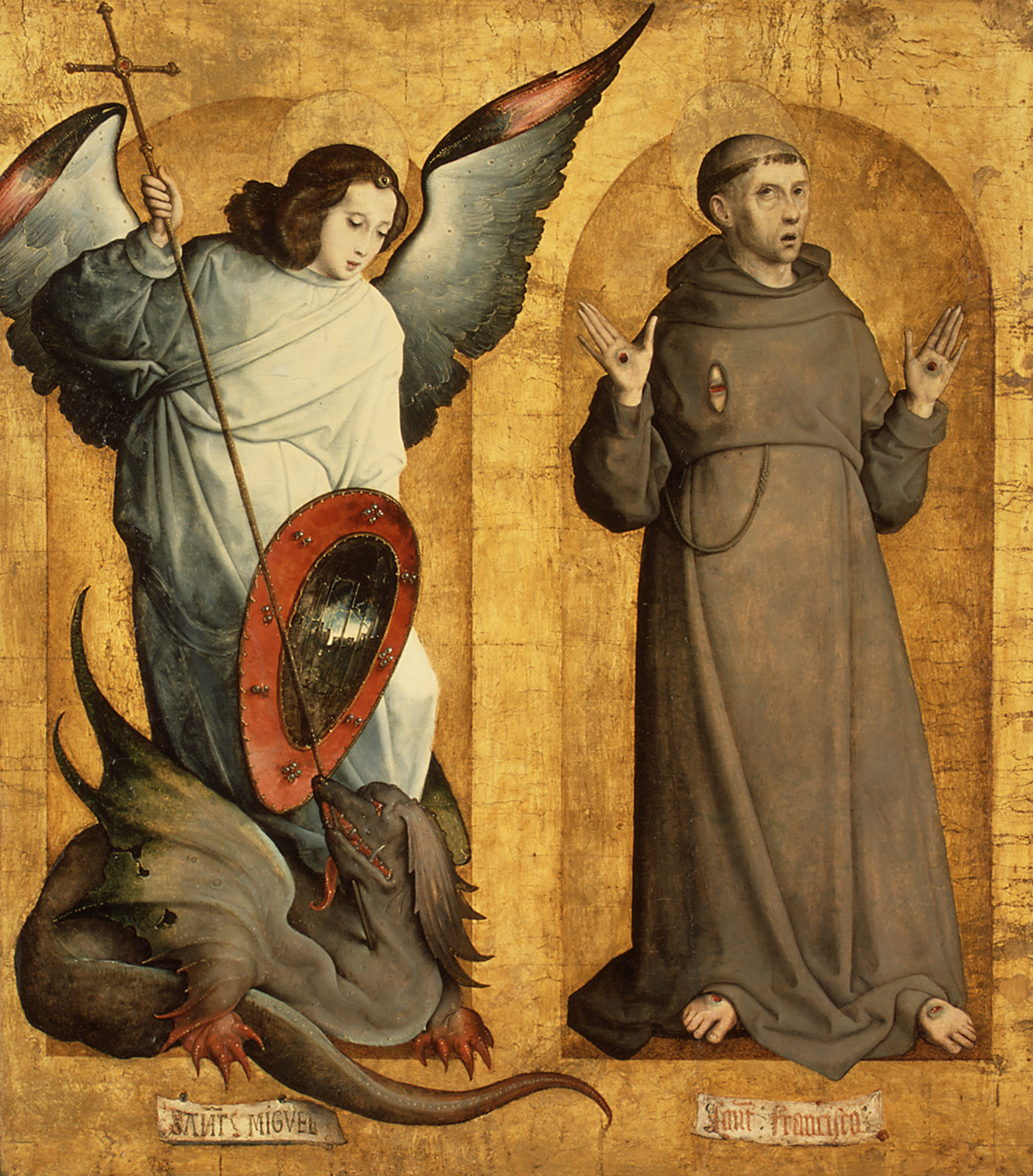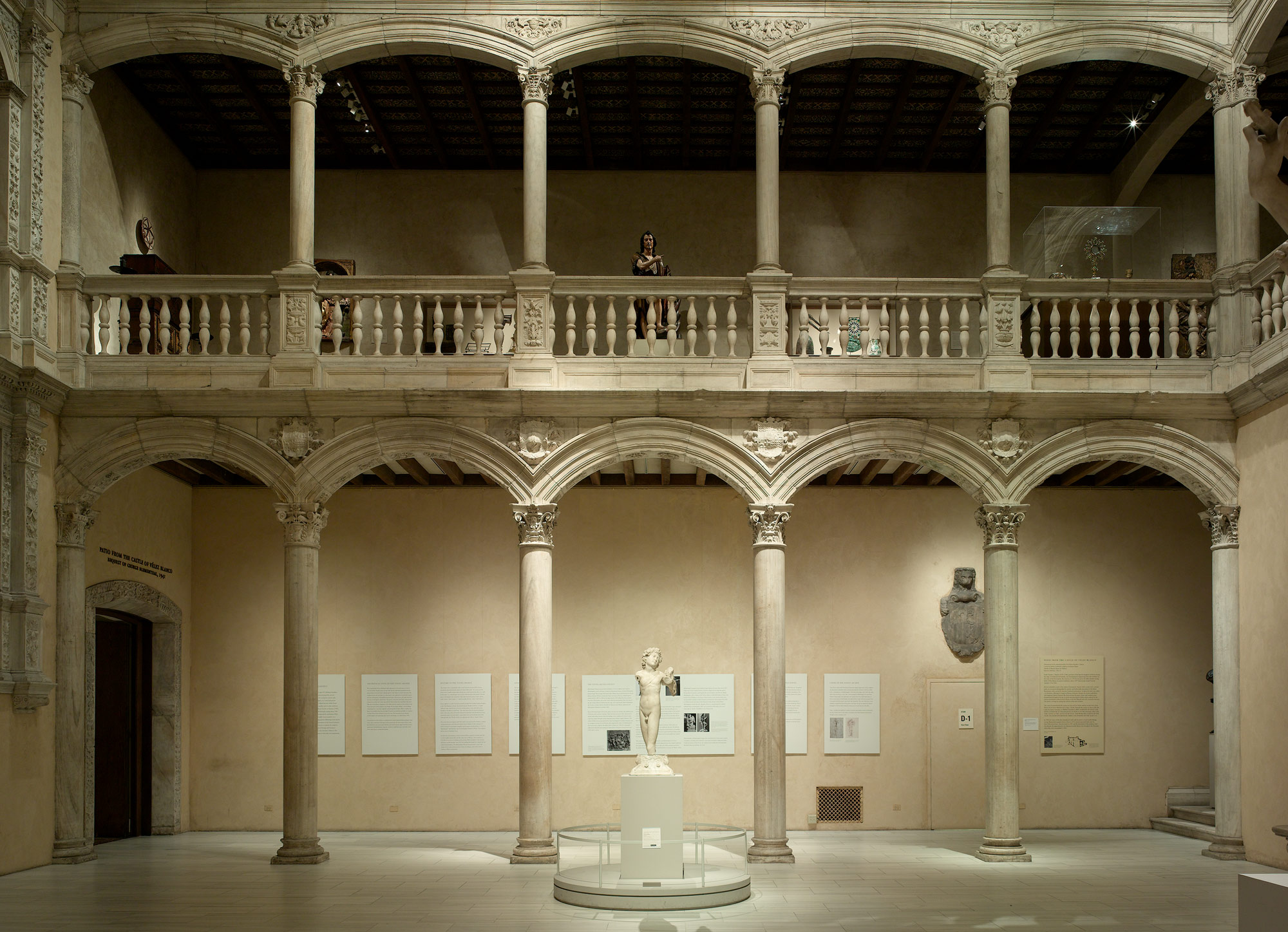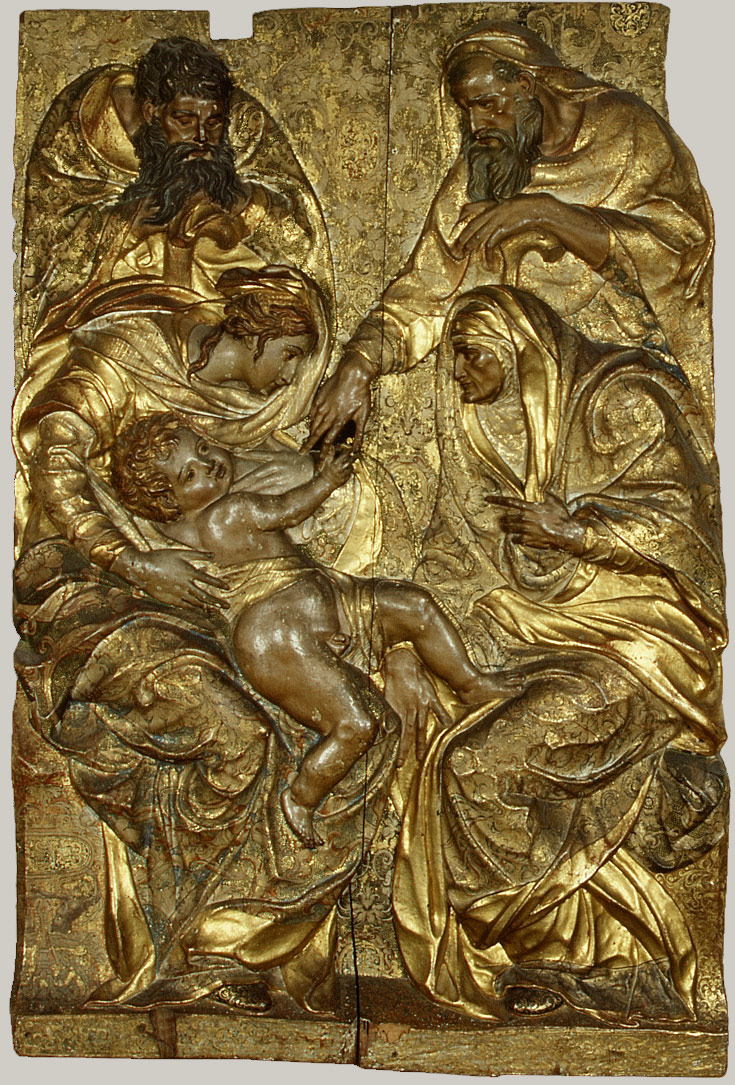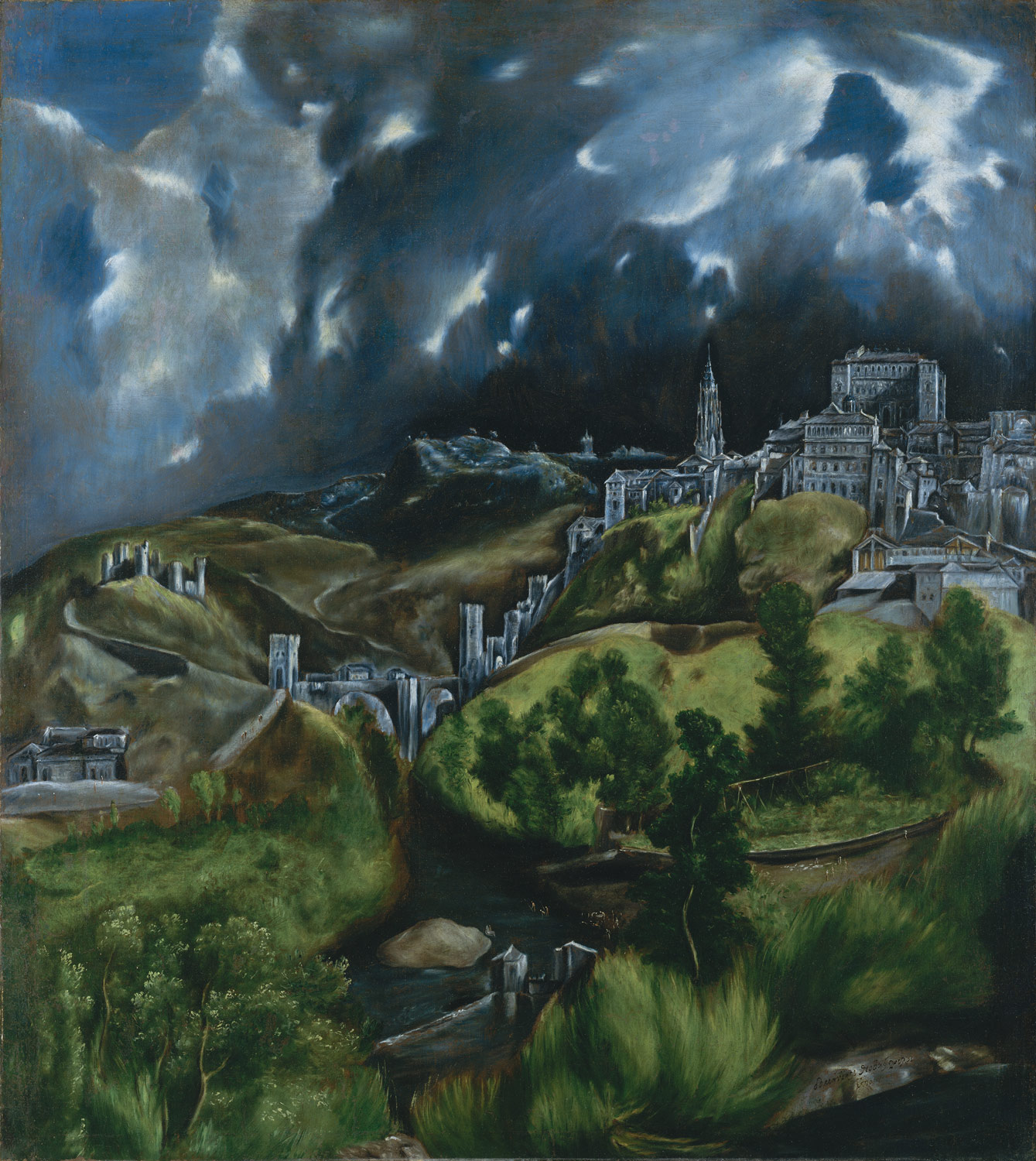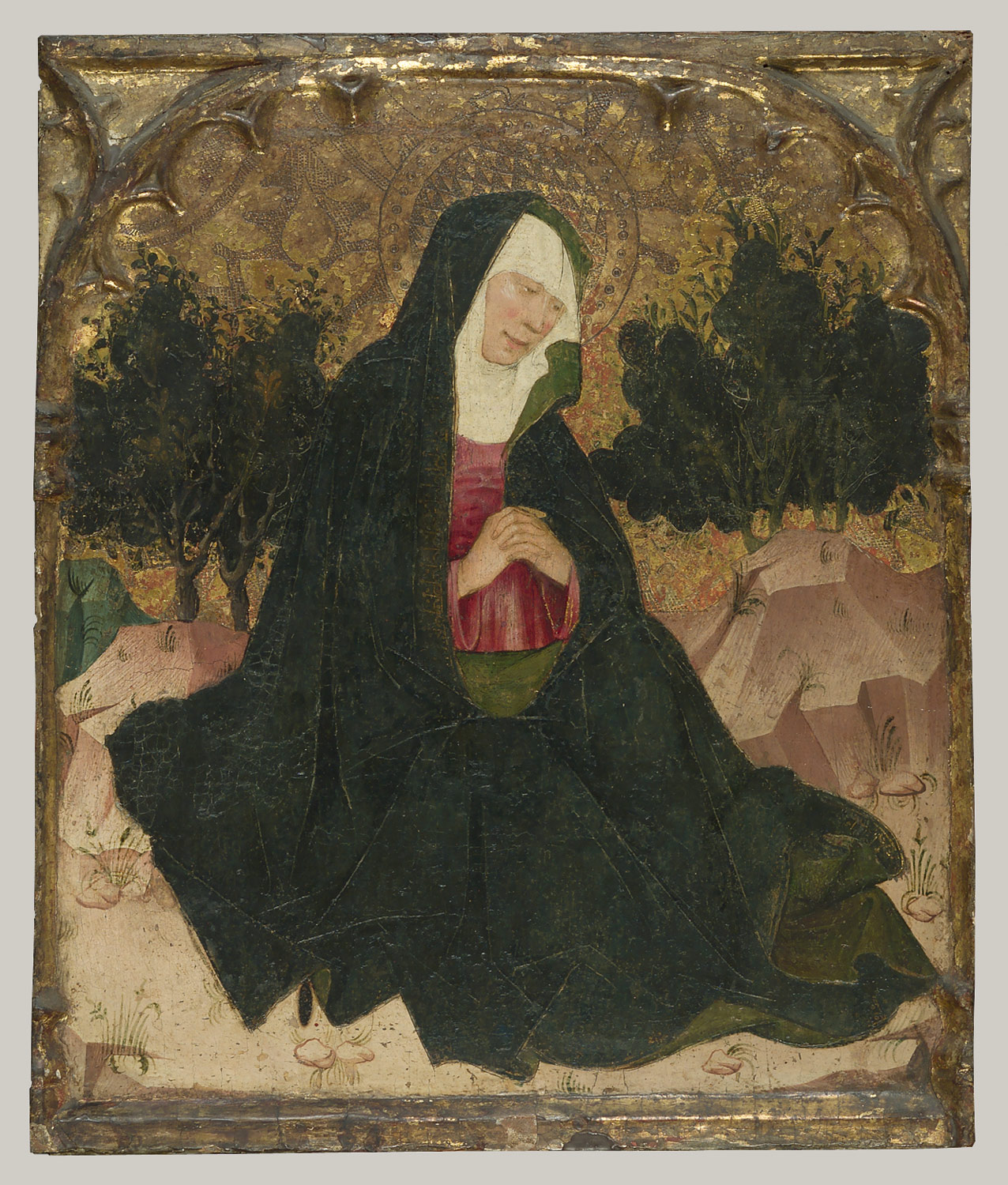At the start of this period, the Iberian Peninsula is fragmented into several kingdoms, its rulers waging continual warfare and engaging in border disputes. The region eventually emerges unified, and by the end of the sixteenth century is a major international power. At its height, the Spanish empire numbers among its territorial possessions vast portions of the Americas, the Philippines, Milan, and Sicily. The consolidation of the monarchy is largely due to the marriage and joint rule of Ferdinand of Aragon and Isabella of Castile, whose devout Catholicism and support of the Inquisition safeguards the country in advance from the Reformation that will rage in other parts of Europe. At the same time, the growing intolerance and eventual expulsion of Jews and Muslims diminishes the presence of their rich artistic culture in both Spain and Portugal. Islamic motifs remain popular, however, and are incorporated with Northern elements into a Gothic style that flourishes throughout the fifteenth century. This is gradually superceded in the sixteenth century by the Italian Renaissance style.
Iberian Peninsula, 1400–1600 A.D.
Timeline
1400 A.D.
1450 A.D.
1450 A.D.
1500 A.D.
1500 A.D.
1550 A.D.
1550 A.D.
1600 A.D.
Overview
Key Events
-
ca. 1400–1492
The artistic traditions of Islamic Spain continue under Nasrid patronage, even though the period is marked by internal strife and marred by the gradual erosion of the kingdom. By mid-century, much of Nasrid territory is under Christian control, and in 1492, following a ten-year onslaught, Granada falls to the forces of Ferdinand and Isabella, bringing to an end almost 800 years of Islamic presence on the Iberian Peninsula.
-
ca. 1416
Prince Henrique (Henry), called “the Navigator” (1394–1460), youngest son of João I of Portugal (r. 1385–1433), establishes a naval base and a school of navigation at Sagres, setting the precedent for Portugal’s rise as a major sea power. As master of the affluent Order of Christ, he sponsors numerous expeditions to Cape Verde and the Canary Islands, Madeira, and the Azores. By the turn of the sixteenth century, Bartolomeu Dias (ca. 1450–1500) rounds the Cape of Good Hope (1488) and establishes a sea route to Asia, Vasco da Gama (ca. 1460–1524) voyages to India (1497–99), and Pedro Álvars Cabral (ca. 1467–1520) reaches Brazil (1500). Through purchase, trade, and conquest, the explorers return to the Iberian Peninsula carrying luxury goods from these countries—including spices, precious metals, gems, textiles, and porcelain.
-
1469
Isabella, infanta of Castile and heir to the throne, and Ferdinand of Aragon are married at Valladolid, seat of Castilian royalty. In the following year, her half-brother Enrique IV (r. 1454–74) names instead as his heir Juana la Beltraneja, supposedly his daughter but of dubious paternity. At Enrique’s death, Isabella takes the throne and civil war breaks out between Isabella’s and Juana’s supporters, including Afonso V of Portugal (r. 1438–81), who marries Juana in 1475 with his own designs on the Castilian throne. In 1476, Afonso is defeated at Toro, and Isabella is acknowledged as queen of Castile in 1479, the same year in which her husband accedes to the throne of Aragon as Ferdinand II (r. 1479–1516). Called the “Catholic Monarchs,” Ferdinand and Isabella not only regain Catholic hegemony in Spain, but also curtail the power of the nobility and consolidate that of the monarchy. Their joint rule, though not an official union of the two kingdoms, is an important step toward the eventual unification of Spain. • late 15th century Gil de Siloé (active 1467–1505), possibly of Netherlandish origin, is among the foremost sculptors of the period, working in the elaborate late Gothic style. He executes the tombs of Juan II de Castile and Isabel of Portugal at the Charterhouse of Miraflores, near Burgos. Gil’s son, Diego de Siloé (ca. 1490–1563), is a master sculptor and architect, emulating instead the classical proportion and symmetry favored by Italian Renaissance artists.
-
1474–1504
The Hispano-Flemish style of architecture and decoration flourishes during the reign of Isabella of Castile. It combines intricate Gothic motifs characteristic of the North with elements of the Islamic-inspired Mudejar style, popular in Spain from the start of the reconquista, about 1085, through the sixteenth century. Juan Guas (1430–1496), Isabella’s court architect, champions the Hispano-Flemish style in structures such as the monastery of San Juan de los Reyes in Toledo.
-
ca. 1478
Ferdinand and Isabella establish the Inquisition in Spain for the trial and punishment of converted Jews (conversos) accused of heresy. Before long, Muslims (moriscos) and, eventually, all citizens are subject to scrutiny by this enormously powerful institution. The condemned are sentenced, often to public penance or death, at the auto-da-fé (literally, “act of faith”). In 1483, Tomás de Torquemada (1420–1498)—notorious for the rigor with which he designs and enforces policies of penalty and censorship—is appointed to the post of inquisitor-general for Castile and Aragon. Torquemada plays a major role in the forcible mass conversion of Jews to Christianity, ordered by the monarchs in 1492; those who refuse to renounce Judaism are expelled from Spain. Cardinal Francisco Jiménez de Cisneros (1436–1517), Isabella’s confessor and archbishop of Toledo from 1495, pursues a similar conversion—and eventual expulsion—of Muslims in Granada. He is best known, however, for his use of the Inquisition as a means for reforming the clergy.
-
1492
Christopher Columbus (1451–1506), a navigator of Genoese birth, sets sail under the patronage of Ferdinand and Isabella in an attempt to discover a westward route to India; he lands instead on an island in the Bahamas, claiming it, and other nearby islands, for Spain. Over the next century, the New World “discovered” by Columbus is continually visited and often exploited by Spanish explorers and conquistadores, and its natural resources, particularly precious metals, bring great wealth to the Spanish crown. In 1494, as tensions mount between Spain and Portugal, already a naval power, Pope Alexander VI arranges the Treaty of Tordesillas at the urging of Ferdinand and Isabella. It places an imaginary dividing line through the Atlantic Ocean, intersecting South America slightly west of the Cape Verde Islands. Spain is given rights of commerce and colonization to lands west of this line, while Portugal is granted the territories to the east.
-
1494
The Habsburg-Valois Wars (or Italian Wars) erupt between various European powers, chiefly France and Spain, for the takeover of several Italian city-states. After the sack of Rome by an imperial army in May 1527, and France’s renunciation of all territorial claims in Italy (1529), the wars end with the Treaty of Cateau-Cambrésis of 1559, by which rule of Sicily and Milan is granted to Spain.
-
by 1496
Juan de Flandes (active by 1496–died 1519), a painter of south Netherlandish origin, is in the service of Isabella of Castile. His elegant and delicately rendered works reflect the refined tastes of the queen, a learned and distinguished patron of the arts. Represented in Isabella’s extensive collection are Spanish, Italian, and Flemish artists, including Pedro Berruguete (ca. 1450–ca. 1500), Botticelli (1444/45–1510), Perugino (active by 1469, died 1523), Dieric (Dirk) Bouts (active by 1457, died 1475), and Hans Memling (active by 1465–died 1494).
-
16th century
The plateresque style, characterized by profuse surface decoration, is popularized in architecture and decorative arts—particularly metalwork—of the first half of the century. Over time, Gothic and Mudejar elements are diminished in favor of the classical, Italianate style that dominates for the rest of the period.
-
1504
Controversy over succession to the Castilian throne occurs at the death of Isabella I. The crown passes to her daughter, Juana, called “the Mad” (1479–1555), with her father, Ferdinand, ruling as regent. Juana’s husband Philip, son of Holy Roman Emperor Maximilian I (r. 1493–1519), claims the regency from Ferdinand for a single year (1506), but dies before his ambitions on the crown are fully realized. A Habsburg does ultimately take the throne: Juana’s eldest son Charles, later Emperor Charles V (r. 1519–56), succeeds Ferdinand at his death in 1516. Charles’s accession is protested in riots against the “foreign” monarch of Netherlandish birth.
-
early 16th century
The Manueline architectural style develops in Portugal. Named for the Portuguese king, Manuel I (r. 1495–1521), it uses nautical imagery and motifs inspired by expeditions to the East, and reflects the enormous wealth acquired by Portugal in overseas ventures. Outstanding monuments of the Manueline style include Diogo de Boitaca’s (ca. 1460–1528) monastery at Belém (begun 1501), and the west front of the Church of the Convento de Cristo (1510–14), designed by Diogo de Arruda (ca. 1470–1531), a member of an illustrious family of Portuguese architects.
-
1512
Ferdinand annexes to Castile the portion of Navarre that lies south of the Pyrenees; the rest of the kingdom, called Lower Navarre, remains independent until its ruler, Henry III, takes the French crown as Henry IV, and the region is absorbed by France.
-
mid-16th century
The Counter-Reformation begins with the aim of upholding the beliefs of Roman Catholicism while eliminating those corruptions within the church that fuel Reformation thought. The movement is centered in Rome but exerts a powerful influence on the Iberian Peninsula, where it gives rise to a generation of mystics. Foremost among them are Juan de la Cruz (born Juan de Yepes y Álvarez,1542–1591), whose profound religious faith is expressed in some of the finest lyric poetry of the period, and his close friend and colleague Teresa of Ávila (1515–1582). A Carmelite nun and founder of numerous convents, Teresa is perhaps best known as a prolific writer. Her Life (1562–65) describes in detail the ecstatic visions to which she is given; Teresa is frequently depicted in this enraptured state in painting and sculpture following her death and canonization in 1622. It is also during this period that Ignatius of Loyola (1491–1556) and his followers found (ca. 1540) the Society of Jesus, or Jesuits, a religious order dedicated to education and missionary work in the newly explored regions of Asia and the Americas.
-
1556
Holy Roman Emperor (from 1519) and king of Spain (from 1516), Charles V resigns the crown, formally abdicating as emperor in 1558. He divides the vast territorial holdings of the Habsburgs between his brother Ferdinand, who succeeds him as emperor, and his son Philip, to whom he gives Naples and Milan (1554), the Netherlands (1555), and Sicily and Spain (1556). Philip II rules until his death in 1598, and his reign is a tumultuous one. He suppresses Muslim revolts in Spain, but is less successful in his attempts to tighten control over the Netherlands, where he establishes the Inquisition in response to violent waves of iconoclasm and overwhelming support for the Reformation. After a series of military conflicts in the Low Countries, Philip retains authority over the southern Netherlands only. One of the chief successes of his reign is his seizure of the Portuguese crown upon the death of King Henrique of Portugal in 1580.
-
1561
Philip moves the largely itinerant court to Madrid, which he establishes as his capital. As a result, the city experiences a tremendous surge in population and significant urbanization; it is soon the cultural center of Spain and residence to many artists in the service of the court, including the influential portraitist Alonso Sánchez Coello (1531/2–1588). It is also a major center for decorative metalwork production.
-
1576/77
Greek painter Domenikos Theotokopoulos (1541–1614), called El Greco, settles in Toledo—the archdiocese and spiritual center of Spain—where he remains until his death. Trained in his native Crete, and later in Venice and Rome, his works combine Byzantine elements with an intense color palette characteristic of Venetian painting—particularly the works of Titian, in whose workshop El Greco may have studied—and dynamic compositional techniques influenced by Roman Mannerism. While in Toledo, El Greco executes his masterpiece, The Burial of Count Orgaz (Church of Santo Tomé); his dramatic vision of religious ecstasy in this and other paintings reflects and appeals to the fervent spirit of the Counter-Reformation in Spain.
-
1588
Philip sends the Armada, a fleet of 130 ships, to England in an attempt to overthrow the Protestant monarch Elizabeth I (r. 1558–1603). Its crushing defeat by the English navy and later destruction by storms is a debilitating blow to the Spanish commercial and colonial power that relies on its naval supremacy.
-
1598
Philip dies at the Escorial, his court near Madrid. Conceived by Philip in 1559 as a monastery dedicated to Saint Lawrence, the Escorial is, at his death, a vast complex of buildings including the monastery, a church, college, library, and the royal residence. Housed in the Escorial is Philip’s extensive art collection; it reflects the monarch’s taste for Italian and Flemish painting, and includes works by Titian (Tiziano Vecellio) (ca. 1485/90–1576) and Hieronymus Bosch (ca. 1453–1516).
Citation
“Iberian Peninsula, 1400–1600 A.D.” In Heilbrunn Timeline of Art History. New York: The Metropolitan Museum of Art, 2000–. http://www.metmuseum.org/toah/ht/?period=08®ion=eusi (October 2002)
Related
Map
